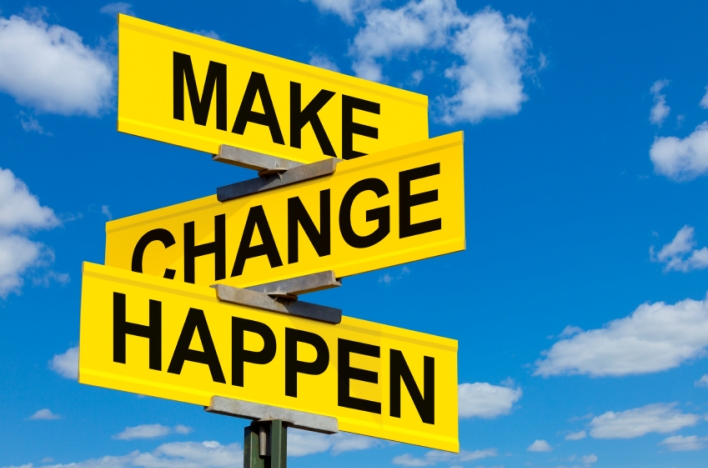Have you ever tried to roll out a change at work and not gotten much of a response?
Quick example: A client decided it was critical that his team members start actively tracking their time, at least at a high level. He needed to know what they were working on (billable or not) and which client it was supporting. He had a lot of good reasons for the change: improved billing, better forecasting for his cash flow, a better sense of where his employees were getting stuck, etc. And it wasn’t a big change, maybe a couple of minutes a day at the most.
The result? About half his staff started complying, although not consistently, and the other half just couldn’t seem to get it done. They weren’t being defiant; it just wasn’t something that was convenient or top of mind.
Motivation and change are challenging. We’re hardwired to fall into habitual behavior. (Think about the last time you brushed your teeth—did you consciously think about any of that process?) However, that doesn’t mean change is impossible. Here are five ways to think about change and motivation that might spark something for your situation.
1. Change the Path, Change the Environment
It doesn’t take much of an impediment to change (or keep) a certain behavior. If you’re addicted to ice cream bars and you decide they’re not good for you, willpower might be able to keep you from eating them some of the time, but if you take them out of your environment and make it difficult to have one, it’s a lot more likely that you’ll stop eating them for good. Find ways to make it easier to do the behavior that you want to encourage.
2. Look for the Bright Spot—Build on What Works
It’s likely that you are sometimes getting the outcome you want. Maybe you have a team of five salespeople, and two of them are successfully selling your new product. The other three haven’t made any progress. Rather than deciding the product is a bust or that you’ve got three bad salespeople, take a few minutes to figure out what your two successful salespeople (your bright spots) are doing to make it work. Are they talking to different people? Using a different angle for the sale? Packaging it differently? It may turn out to be just luck and coincidence, but it’s more likely that you’ll find something you can use to get everyone on board.
3. Plan Ahead—Focus Your Willpower
There have been a bunch of studies that show that your willpower is a finite, but renewable resource. When you’ve had a challenging day, when you’re tired, when you’re hungry, it becomes a lot more difficult to step up and do the right thing just based on willpower. Knowing that, it becomes important to recognize when you’re most likely to fail at implementing a change and plan around it. Let’s say you have committed to writing a weekly blog article, but you know that it’s almost impossible to concentrate at the end of the day. Block out time on your calendar first thing in the morning to give yourself a clear, uninterrupted window to write. Plan ahead.
4. Make it Fun
Australian software company Atlassian came up with a concept they call “FedEx” days, where once a quarter they give their software developers 24 hours to work on whatever they want—it could be a new product, a fix to a problem, etc. The only rule is that they have to “deliver” (that’s the FedEx part). They present their ideas at the end of the 24 hours—on a Friday afternoon in front of the whole company with cake and beverages, and the winning idea gets recognition and a prize. Atlassian credits a huge part of their growth and success to the ideas that have come out of these fun team events.
5. Think Big—Why Are You Here?
It turns out that most of us, once we’re making “enough” money, are really motivated to do our best work because of big ideas. If you want to tap into that extra well of energy, inspiration and ideas that all of us have, then you need to find a way to Think Big. What’s the big idea behind your business (beyond just making money)? Why was it started? What makes you get up in the morning? How are you helping people, and is that a worthwhile cause? The more you can tap into the big idea, the more people on your team who also buy into that big idea will give their heart, soul and free time to making that big idea come to life.
What happened to my client who wanted better time tracking? He found a way to automate collecting the time for most of the work, leaving just a quick review and send at the end of the day. He changed the environment to make it easier and faster, and now everyone is actively tracking their hours. Soon it will be a habit.


